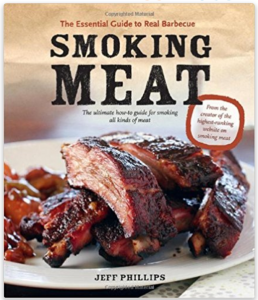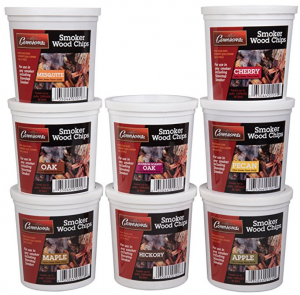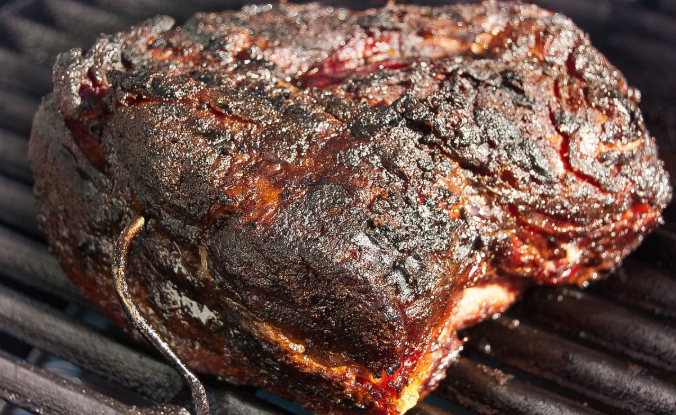 Using Wood For Smoking Meats
Using Wood For Smoking Meats
A unique but not new way to bringing out the robust flavours of our meats is by smoking. It is important to select the best meat smoker and deciding which fuel option, charcoal, electric or gas, works best for you. Smokers are fuelled by various methods by either propane gas, electricity or traditional charcoal briquettes. Any of these fuels in turn, heats wood and generates the desired smoke.
The amazing flavouring results from smoking are revealed with the wood types and wood size selections that are available in the market place.
Here are some simple hints for Selecting Meat Smoking Materials and Woods…
1) Find woods that generate plenty of smoke to get the best smoky flavours and proper burn times. Most smoking woods suppliers have the information on their packaging.
2) Avoid any type of charcoal that has been impregnated with lighter fluid. Not only is it dangerous to use, but if you don’t let them burnout successfully they will give a chemical taste to your meats and it makes smoked meats taste terrible. Turn to natural charcoals instead and let them burnout with proven charcoal set up methods.
3) Follow the basic wood-selection rule: Hardwoods, which are heavier (oak, maple, hickory or mesquite) for meats of beef, pork or venison, and lighter woods (cherry, pecan, alder or apple) for lighter meats and fish such as chicken and salmon. For example try some of these…
-
Jim Beam Oak Barrel Smoking Chips made from Jim Beam Barrels for venison back strap

-
Camerons Wood Smoking Chips Variety Gift Set of Oak, Apple, Cherry, Pecan, Maple, Bourbon, Hickory, Mesquite for your other meat

Click here for a great wood smoking chart for meat types to use
4) Don’t be to concerned of the the many types of wood forms. The four main wood sizes available…

The choices are quite easy to understand at a glance. The larger the wood size, the longer it smoulders and smokes. Big slabs of meat like brisket and pork shoulders, smoke well over bigger chunks of wood.
5) Read your smoker’s directions as some smokers require only a certain type of wood to work at its best capacity.
6) Consider the debate about soaking ALL wood types. Liquid isn’t always a good thing. Some bbq aficionados agree soaking wood, especially chips, as the idea is to lengthen burn rate and add flavour, however pellets and large chunks tend not to absorb enough of the liquid and the whole exercise could turnout to be a waste of time.
7)  Try dry foil smoking. Place wood chips onto a sheet of aluminium foil and wrap into a ball, poke holes into the foil to allow smoke to ventilate, place ball directly onto coals or grill. Or simply use a ready made foil pouch from Amazon
Try dry foil smoking. Place wood chips onto a sheet of aluminium foil and wrap into a ball, poke holes into the foil to allow smoke to ventilate, place ball directly onto coals or grill. Or simply use a ready made foil pouch from Amazon
8) Other non-wood items can be used to smoke with too. For example, you can smoke with soaked herbs and even slices of onions and garlic. Those last two when done together are incredible. Simply toss thick slices of onion or whole cloves of garlic onto the fire when smoking. Don’t worry about skinning the onion or the garlic. It all imparts great flavor.
9) Veggies and cheese smoke well, too. A water pan full of herbs and spices (not wood) can add another taste dimension to somewhat boring veggies at times.
Things to avoid when smoking your meats…
I’ve listed a few tips above to get you started with the art of smoking, now let’s touch on some woods that should never be used for smoking.
- If you’re not sure of the origin of the wood you wish to use it is best not to take a risk and use it.

Painted Wood Is A Big NO NO… You don’t want to be a Guinea Pig just in case something goes wrong.If there is no definitive way to prove what type of wood it is, do not use it.
- These days lumber is mostly treated in some way to make it more durable for building. Keep away from any type of lumber for fear of chemical treatments that may have been injected into it.
- Any wood that has been painted or stained should not be used to smoke.
- Old discarded pallets are a big no-no. The wood has definitely been treated and also, depending on what they were used for storing, they may have had chemicals spilled on them at some point, the vapours will go directly into the food and then into your body.
The wood ranges are wide and just experiment as you get more confident with your smoking prowess. Even try out the already naturally flavoured varieties like acacia, apricot, birch, butternut, cottonwood, fig, lemon, lilac, mulberry, nectarine, olive, pear, plum, sassafras, and walnut among many others.

I hope my article has given a bit of insight into the art of smoking and why not dive into smoking, mix and match woods and add the smokiness to your meat. Even do it in conjunction with meats that have been marinated or seasoned. Everyone in the family can get involved and you never know, you just might find a new unique flavour that can wow your guests when you invite them round next time.
John